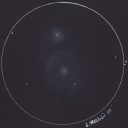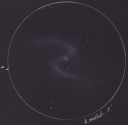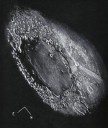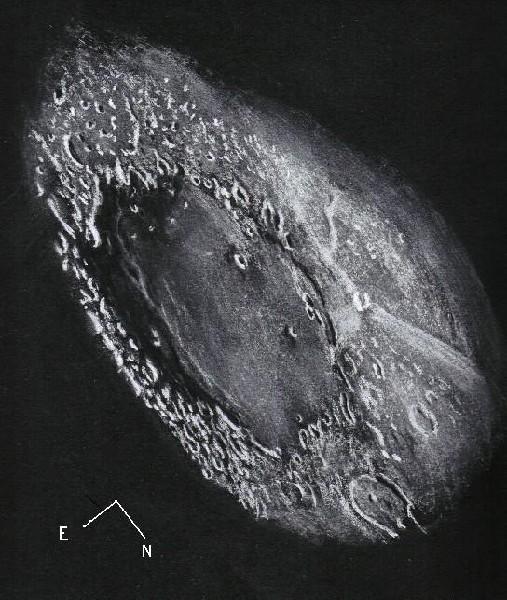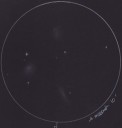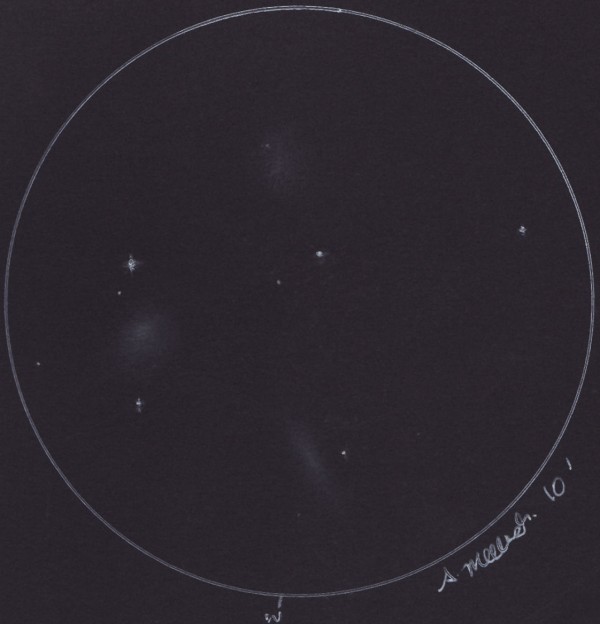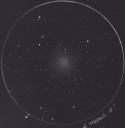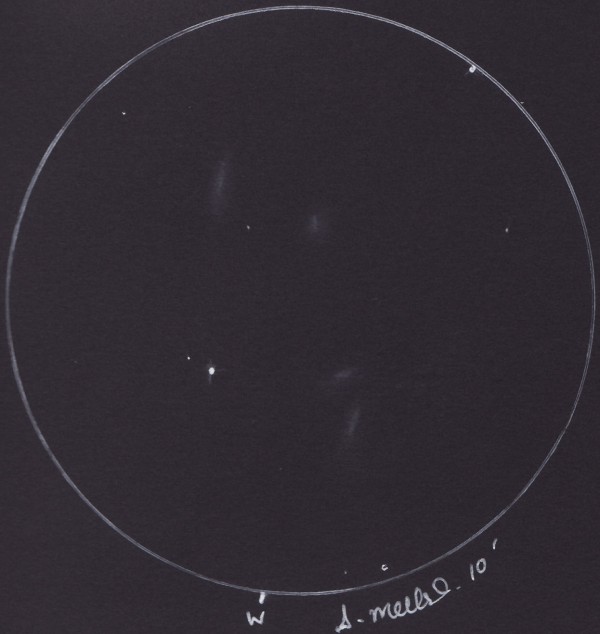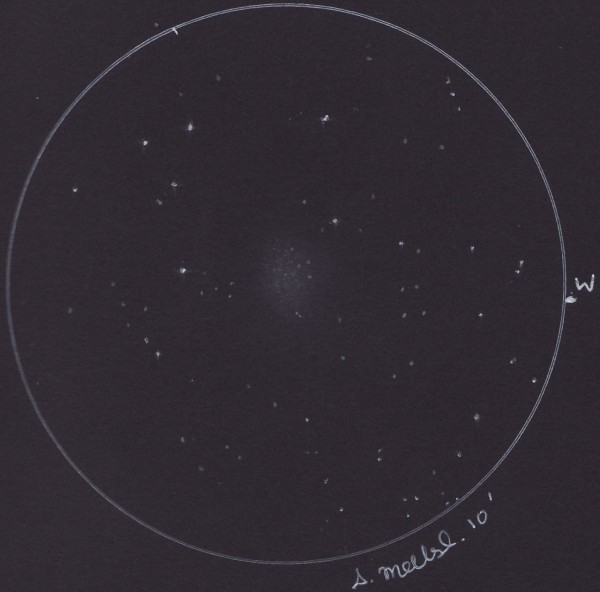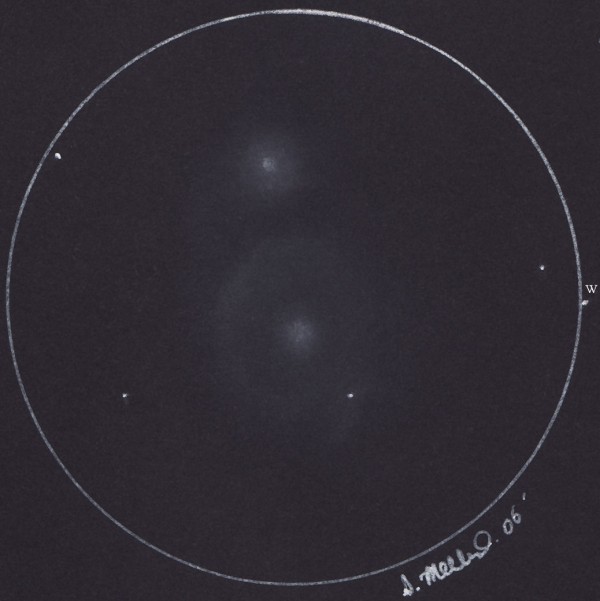
NGC 5194/5195 (M-51)
The “Whirlpool Galaxy”
Interacting galaxies
24/05/06
Ilford NSW Australia
41cm f4.5 dobsonian telescope
Field: 23′
Magnification: x210
Canes Venatici
Black Canford paper
White pen
White pencil
White pastel chalk
Blending stump
Paint brush
What can I say about the Whirlpool Galaxy?
At my location Messier 51 is at a little over +47 deg, so it is about as far north as I can go without getting ridiculous, especially when there is a big chunk of glass sitting at the bottom of the telescope.
At this extreme declination I only require a modest chair to sit on as the object is so low in the northern sky.
I done this sketch in 2006 in my old 41cm dob, which was before I purchased a sky quality meter so information on the “seeing” conditions is a bit scant.
However the northern sky from my site always seems to look a bit hazy down low despite the fact that there is no major city in that direction except from the
rural township of Mudgee some 40km away.
I best leave any thoughts on my interpretation of NGC 5194/5195 for those who observe it far higher in the sky than me.
Scott Mellish


